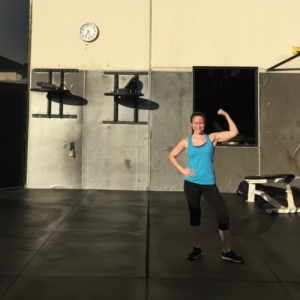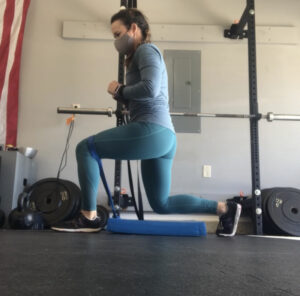This is one of those questions where the quick answer is “it depends.” (I know, boooooo. But hang with me a minute.)

To start, we need to define what exactly a workout is. This isn’t based on duration or intensity, necessarily, but can be. A beginner may count a 10-minute walk as a workout, whereas a more experienced and fit person may count that as more of an active recovery session. Both are legit.
As I’ll explain in greater detail below, there are several factors that determine how many times a week would be optimal (or even just good enough to maintain).
Generally speaking, two or three times a week of strength training can be effective for most people for general fitness and strength. Add in a few days of cardiovascular training and/or walking, and you’re set. Unless your goal is more specialized or high level (eg, a marathon or bodybuilding show), you don’t need to spend every day in the gym for hours at a time.
Fitness doesn’t need to be a part-time job. (Unless you just really love what you’re doing, you’re recovering well, and it’s coming from a healthy place, then you do you.)

The longer, more nuanced answer depends on a few factors:
Your Goals
What kind of goals do you have (aesthetic/fat loss, strength, fitness, sports performance, muscle, general health, etc.)? A fat loss goal is going to require a different routine than building muscle or completing a half-marathon or 5K.
General Recommendations Based on Goals*:
General Health: 3-4 days a week
Strength: 3-4 days a week
Fat Loss: 3-5 days a week
Building Muscle: 3-5 days a week
Running a Race: 3-6 days a week (3-4 days of running + 2 days of strength; can be combined in one day)
* Use these recommendations as a jumping off point as you consider the following other factors.
Your Current Fitness Level
How fit and/or strong are you right now? Are you just starting out, or coming back from time off or injury? Are you pretty fit already and want to maintain or boost your results or take on a new challenge?
It takes time to build stamina and strength, but even more so muscles and the connective tissues that protect our joints. Doing too much too soon is a recipe for disaster — injury, excessive soreness and aches and pains, overtraining symptoms (high resting heart rate, crappy sleep, feelings of burnout, excessive fatigue).
Someone starting out will want to stick to the lower end of workouts for at least the first several weeks or months, depending on the other factors mentioned in the this post.

Your Training Age
This means how long you’ve been lifting weights or working out. Are you more of a newbie, or have you been working out for a while? How often are you working out now, and for how long have you been doing that?
Someone who has been running or lifting for years can not only get away with more frequent workouts, but they may actually need more workouts to get to that next level.
Your Lifestyle
Is your job (counting SAHMs here too — that’s as much a full-time job as anything!) or schooling sedentary or fairly active?
How do you spend your free time? Are you active (housework, yardwork, playing with kids, walking the dog) or pretty sedentary (sitting on the couch watching Netflix or reading — no judgment here! 
Is your life busy and stressful?
Fitting in the most workouts possible in a week that’s already scheduled to the max is not optimal for mental or physical health. And your ability to recover is greatly impacted by how you spend the other hours of your day.
Ability to Recover
And speaking of recovery, doing the optimal amount of workouts in a week or month doesn’t matter if you can’t recover between workouts. Mental, emotional, and physical stressors affect sleep, overall health, energy, and more, and thus affect how well we can recover from a workout and be ready for the next one.
Being too sore or tired to do your planned workout, especially several days in a row, will affect your results and how you feel about your progress and fitness in general. No bueno.
Not only that, but in order to build muscle, the muscle fibers that have been broken down with exercise need the appropriate time, sleep, nutrition, and other recovery factors to build back bigger and stronger. Too frequent workouts can hinder your results in the long run.

Intensity and/or Duration of Individual Workouts
An especially intense or long workout requires time to recover and rebuild muscles and soft tissues back stronger. A good coach wouldn’t recommend doing two leg workouts back to back, or a HIIT session the day after a long run.
If you like (or need according to your goals) to go hard several days a week, then you won’t be able to do frequent workouts without paying the price. But fitting in lighter intensity and shorter workouts between tougher bouts can work for most.
It’s never a bad idea to do what’s called periodization — alternating the intensity or load of your training sessions not only throughout the week (light, moderate, heavy), but also throughout the year. Having a deload week (cutting back on frequency, intensity, load, and/or duration of workouts every few weeks or so) or an “off-season” at various points in the year are also recommended.
I hope this helps you create a workout schedule that not only fits your goals, but also your lifestyle and schedule. Feel free to connect with me via DMs on Instagram if you have any questions!
